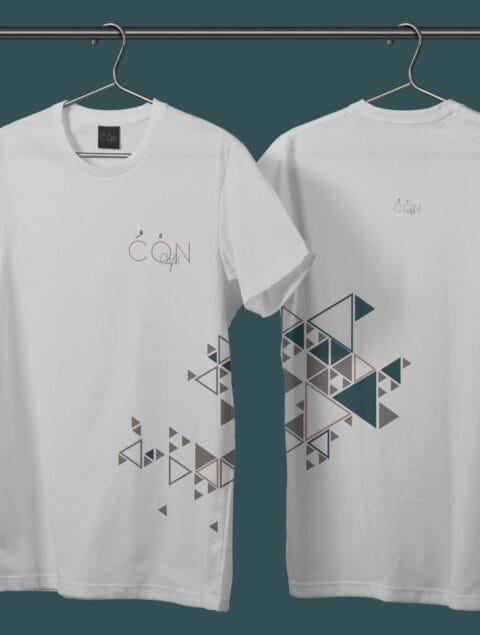In a crowded market of ideas and designs, distinction doesn’t come from visual beauty alone, but from deep understanding. A designer who starts with real awareness of your audience doesn’t just deliver a design, but builds effective communication and tangible impact that reflects in your business results.
Many projects don’t fail due to weak design, but because the designer didn’t understand your audience well, didn’t listen to your vision, and didn’t look at your project from your customer’s perspective. With the creative designer Jiyad, design becomes a strategic marketing tool based on accurately analyzing your audience’s needs and behavior.
If you’re looking for a design that convinces and achieves your goals before it dazzles, and a designer who thinks like your audience, then you’re in the right place.
Why is understanding the audience a fundamental step in a designer’s work?
The success of design is not measured by its visual beauty alone, but by how well it delivers the right message to the target audience. A designer who has a precise understanding of your audience’s behavior and needs can translate your business goals into impactful visual elements that elicit real customer response. This understanding guides every design decision — from color selection to content presentation — to speak directly to the customer’s mind and interest, increasing interaction opportunities.
The designer’s impact on customer experience and project results
Having a designer who is aware of your audience’s nature creates a tangible difference at every touchpoint between the customer and the brand. Thoughtful design doesn’t just beautify, but builds an impression and leads to an integrated experience that boosts audience trust and eases decision-making. Through understanding the audience, the designer offers solutions that enhance value and improve project performance, whether in marketing campaigns, brand identity, or user experience. The result: design that serves your business goal and translates into measurable results.
How does design help build trust in the brand?
Design is the first thing the customer sees, and the first thing by which they judge the brand’s credibility. Professional design doesn’t stop at aesthetic appeal, but visually conveys the organization’s identity, values, and professionalism directly. Every design element — from the logo to the full visual identity — plays a key role in creating a positive first impression and strengthening trust in the quality of what you offer.
When design is consistent, clear, and accurately reflects the brand’s personality, the customer feels reassured and mentally associates it with credibility and professionalism. Therefore, the designer who understands your audience and accurately translates your vision helps cement long-term trust.
Criteria for choosing the right designer for your project
- Ability to understand the target audience before starting any design work.
- A trustworthy portfolio showing tangible results, not just aesthetic samples.
- Professional communication skills to ensure clarity and smooth collaboration.
- A clear marketing vision that makes design a tool of attraction, not just appearance.
- Flexibility and commitment to deliver high-quality work on time.
- Attention to small details that make a big difference in customer experience.
- An organized workflow that starts with analysis and ends with measuring results.
The creative designer Jiyad: understanding the market before design
Before the creative designer Jiyad starts executing any design, he makes understanding the market an absolute priority. This deep understanding enables him to deliver design solutions that are not just beautiful, but based on actual data and real needs of the target audience. Working on a knowledge-based foundation ensures that every design decision serves a specific marketing goal and contributes to achieving tangible results. The most important steps in understanding the market with designer Jiyad:
- Accurate study and analysis of the market and competitors.
- Identifying the behavior and needs of the target audience.
- Defining appropriate marketing messages for each customer segment.
- Integrating business vision with modern design trends.
- Developing design strategies that effectively achieve project goals.
The difference between a traditional designer and a designer who focuses on the audience
Choosing a designer directly impacts the value of the design and how well it achieves the goals. While the traditional designer often focuses only on aesthetics, the audience-focused designer places customer needs and behavior at the heart of the design process, creating a targeted and impactful visual experience. Here are the key differences between a traditional designer and an audience-focused designer:
- The traditional designer focuses on the client’s taste, while the audience-focused designer considers the preferences and needs of the target customer.
- Traditional design considers only aesthetics, whereas audience-focused design blends beauty with a marketing goal.
- The traditional designer works in general, while the audience-focused designer uses data and analysis to understand the market.
- Traditional designs are less effective at conversions, while audience-focused design achieves higher interaction and sales rates.
- The audience-focused designer revises the design based on audience feedback and adjusts to ensure effectiveness.
How to start a successful collaboration with the creative designer Jiyad?
- Define your goals accurately and share full project details.
- Provide clear information about the target audience and the message to convey.
- Maintain ongoing communication to review progress and exchange ideas.
- Rely on the designer’s expertise to deliver innovative and market-aligned solutions.
- Adhere to agreed deadlines to complete the work on time.
- Professionally receive revisions to ensure the design reaches its best form.
Why does a designer who understands his audience achieve better results?
A designer’s understanding of his audience is the true key behind the success of any design and achieving its marketing goals. A designer who studies your audience and their needs creates designs that the target groups naturally engage with, increasing conversion and growth opportunities. Reasons why an audience-focused designer excels:
- Precisely targeted design that meets customer expectations and needs.
- Ability to deliver marketing messages clearly and effectively.
- Improving the user experience, which increases interaction and customer retention.
- Leveraging data and analytics to understand different behavior patterns.
- Creating designs that motivate decision-making and drive sales.
- Reducing errors that may lead to lost market opportunities.
Your design is the voice of your project… make it heard
Design is not just an image or a color, but the way your project speaks to your customers. The professional designer is the one who makes this voice clear, persuasive, and impactful, stirring the audience’s emotions and motivating them to interact with your brand. A well-crafted design reflects your project’s identity accurately and translates your vision in a way your audience easily understands, making it heard powerfully in the competitive market.
Don’t let your design be just a static front, but make it an effective communication tool that helps build a lasting relationship with your customers.
In the world of design, it’s not beauty alone that distinguishes the work, but the designer’s deep understanding of your audience that makes the real difference. The professional designer who combines creativity and analysis contributes to increasing your project’s value and turning ideas into designs that achieve your goals tangibly.
Choosing a designer who knows your audience well is a smart investment that leads to successful designs that influence customer behavior and build sustainable trust relationships with your brand. Don’t leave your project’s success to chance — rely on the designer who understands your audience and reflects that in every design detail.
Take the step now and start your journey with the professional designer who deeply understands your audience, to craft a brand that leaves a real impact in the market. Contact today and don’t miss your chance to outshine the competitors.
Frequently Asked Questions
1- Why is understanding the audience important for the designer?
Because effective design starts with a precise understanding of what attracts and appeals to the audience, making the design create real impact, not just visual beauty.
2- How can the designer learn about the project’s audience?
Through market analysis, studying customer behavior, surveys, and continuously reviewing the project’s goals.
3- Can any designer understand the client’s audience?
Not all designers — the professional designer is the one who combines design skills with understanding marketing and customer behavior.
4- What’s the difference between a traditional designer and an audience-focused designer?
The traditional designer focuses only on the aesthetic aspect, while the audience-focused designer designs based on audience data and needs to achieve actual results.






